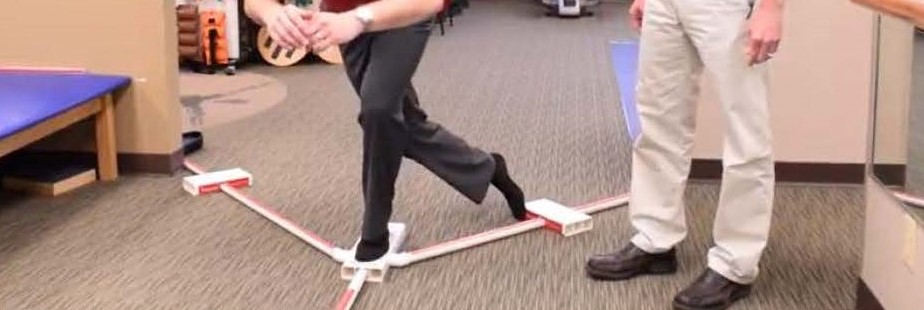
12 Dec What is FMS and Y-Balance?
By Matthew Zaudtke, PT, DPT, OCS, ATC, CSCS
Movement is critical. The human body was made to move. We have to keep our body in motion to reduce the risks associate with a sedentary lifestyle. Some people maintain motion through participation in athletics or recreational running, cycling, or swimming. Others enjoy walking or gardening around the house. No matter how old you are or what activities you enjoy, effective movement is crucial. As physical therapists, we have a unique education that makes us particularly skilled in analyzing, diagnosing, and improving movement of the body. We do this through detailed assessment and testing. Two such tests have particular usefulness in helping us to understand if your movement is limited or asymmetrical. These tests are the Functional Movement Screen (FMS) and Y-Balance Test (created by the Functional Movement System).
The FMS uses seven upper and lower body movements to evaluate your global movement patterns. These patterns assess your strength, control, and flexibility. In evaluating these foundational motions, we can identify areas of limitation in your body. By doing so, we can help protect your body from future injury and incorporate strategies to improve your performance in what you love to do. Another useful test in evaluating movement and potential injury risk is the Y-Balance Test. This assessment involves measuring your ability to reach into three planes of movement while standing on one leg. By quantifying your balance and control on a single leg, we can further look for asymmetries in movement and compare your results to others of the same age and activity level. By combining these well-established testing methods, we can confidently identify your injury risk and help you maintain your motion.
These effective measuring tools can help you track progress and improvement in your movement throughout your life. Be sure to contact Body One Physical Therapy to set up an appointment to discuss how these tests can help you. No referral necessary!
For an example of how the FMS and Y-Balance works please watch video below.




